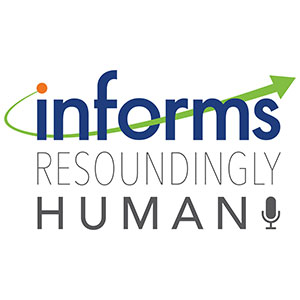
Monkeypox likely infecting new groups, experts say
EXPANDING TRANSMISSION? — Monkeypox may already be spreading more significantly beyond men who have sex with men — the population with the most reported cases so far.

EXPANDING TRANSMISSION? — Monkeypox may already be spreading more significantly beyond men who have sex with men — the population with the most reported cases so far.

How many times have you heard variations of this sentiment from friends who have quit something in a rage, taken a leap of faith by switching industries mid-career or finally decided to take a sabbatical to traipse around the world without a concrete plan?

Supply chains this year have been plagued by long delays and shortages. What can be done to assure a more reliable and resilient supply? We asked Dr. Christopher Tang of UCLA to weigh in.

Beer consumption has always provided insights into shifts in demographic preferences and brand marketing. A new study conducted to measure brand preference based on demographics sought to identify trends in the beer industry. It found that Baby Boomers did not pass their own beer brand loyalties down to their Millennial children.

With grocery prices rising, experts say consumers should be on the lookout for products also getting smaller.

Jeff Cohen
Chief Strategy Officer
INFORMS
Catonsville, MD
[email protected]
443-757-3565
An audio journey of how data and analytics save lives, save money and solve problems.


With seemingly no limit to the demand for artificial intelligence, everyone in the energy, AI, and climate fields is justifiably worried. Will there be enough clean electricity to power AI and enough water to cool the data centers that support this technology? These are important questions with serious implications for communities, the economy, and the environment.

It’s college graduation season, which means over 4 million seniors will graduate in the next few weeks, flooding the job market with new candidates. One area that has shown high potential for the right candidates is artificial intelligence and machine learning. Both disciplines are part of the larger data and analytics career path.

Drugs being explicitly developed to treat rare diseases are getting more expensive.

Robert F. Kennedy Jr., as the new secretary of Health and Human Services, is the nation’s de facto healthcare czar. He will have influence over numerous highly visible agencies, including the Centers for Disease Control and Prevention, the National Institutes of Health and the Food and Drug Administration, among others. Given that healthcare is something that touches everyone’s life, his footprint of influence will be expansive.

The recent US-China agreement to temporarily reduce tariffs is a major step for global trade, with tariffs on US goods entering China dropping from 125% to 10% and on Chinese goods entering the US decreasing from 145% to 30% starting May 14. While this has boosted markets and created optimism, key industries like autos and steel remain affected, leaving businesses waiting for clearer long-term trade policies.

With sweeping new tariffs on Chinese-made products set to take effect this summer, Americans are being urged to prepare for price hikes on everyday goods. President Donald Trump's reinstated trade policies are expected to affect a wide swath of consumer imports, including electronics, furniture, appliances, and baby gear. Retail experts are advising shoppers to act before the tariffs hit and prices rise.

Twenty years ago, few people would have been able to imagine the energy landscape of today. In 2005, US oil production, after a long decline, had fallen to its lowest levels in decades, and few experts thought that would change.

In the case of upgrading electrical and broadband infrastructure, new analysis from the University of Massachusetts Amherst reveals {that a} “dig once” strategy is almost 40% more economical than changing them individually.